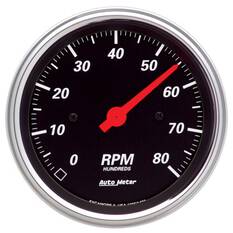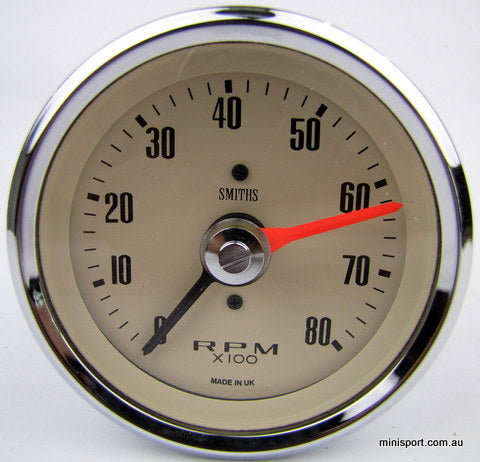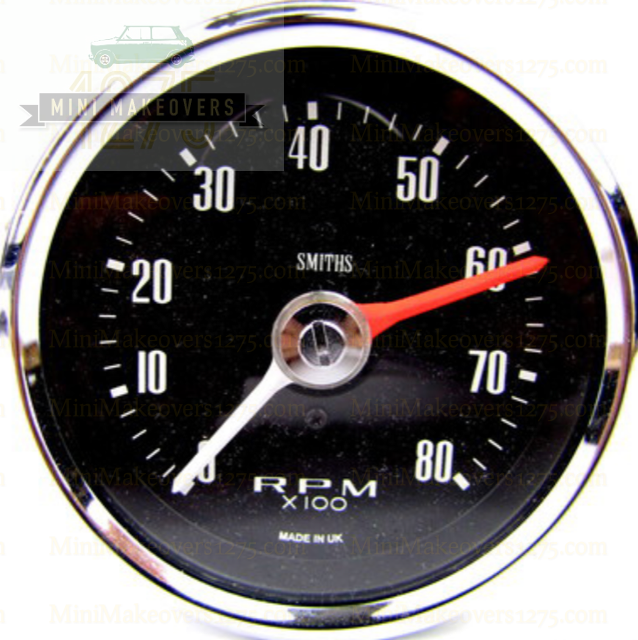Exactly How a Tachometer Helps Monitor Engine Health and Efficiency
Exactly How a Tachometer Helps Monitor Engine Health and Efficiency
Blog Article
The Relevance of a Tachometer in Checking Engine Speed and Efficiency in Automotive Applications
In the realm of vehicle design, the tachometer stands as a pivotal tool in the vehicle driver's toolbox, giving a straight window right into the inner operations of a vehicle's engine. Past its function as a simple gauge of transformations per min (RPM), the tachometer offers as an essential tool for enthusiasts and experts alike, providing real-time insights into engine efficiency and health and wellness. Comprehending the significance of this gadget surpasses surface-level monitorings, diving into the elaborate partnership in between engine speed, power outcome, and overall driving experience. As we explore the diverse role of the tachometer in auto applications, a much deeper gratitude for its effect on vehicle characteristics and effectiveness starts to emerge.
Importance of Checking Engine RPM
Checking engine RPM, or changes per min, is a critical element of automotive upkeep and efficiency analysis. Engine RPM directly correlates with the speed at which the engine's crankshaft turns, indicating how quickly the engine is running.
Moreover, monitoring engine RPM is vital for efficiency examination in racing and high-performance vehicles. In recap, keeping track of engine RPM is not just essential for discovering concerns yet also for optimizing engine efficiency in numerous automotive applications.

Benefits of Real-Time Information
In automotive applications, real-time data plays a vital duty in providing instant insights into the performance and condition of the vehicle. By constantly keeping an eye on different specifications such as engine rate, temperature level, gas usage, and much more, real-time information uses many advantages that add to improved effectiveness and security when traveling.
Furthermore, real-time data facilitates efficiency optimization by offering prompt comments on driving habits and engine performance. Chauffeurs can readjust their behavior in real-time based on this details to accomplish far better gas economic situation and extend the life-span of their car.

In addition, real-time data plays an essential function in modern-day automotive diagnostics, making it possible for specialists to swiftly diagnose and attend to malfunctions. This causes lowered downtime, lower upkeep prices, and ultimately, enhanced total vehicle reliability and longevity (tachometer). By using the power of real-time data, vehicle stakeholders can make educated decisions that favorably affect both the efficiency and long life of the car
Influence on Gear Shifts
Effective equipment changes in auto applications considerably affect total efficiency and driving experience. The tachometer plays a vital duty in optimizing gear shifts by offering real-time engine speed data to the motorist. directory When approaching the redline on the tachometer, it signals the chauffeur to upshift to stop over-revving the engine and creating possible damages. On the various other hand, downshifting at the appropriate minute can aid maintain the engine in its power band, ensuring responsive acceleration when needed.
In addition, the tachometer help in accomplishing smoother gear transitions, specifically in hands-on transmissions. By keeping an eye on engine speed, vehicle drivers can implement equipment shifts at the optimal RPM variety, minimizing snagging motions and minimizing endure the transmission elements. This precision in gear adjustments not just improves driving comfort yet likewise contributes to fuel performance.
Enhancing Fuel Performance
Offered the essential function the tachometer plays in optimizing equipment shifts for performance and engine wellness, it directly adds to making the most of gas effectiveness in automotive applications. By giving real-time comments on engine speed, the tachometer helps chauffeurs in keeping one of the most reliable RPM variety for fuel economic climate. When chauffeurs consistently check the tachometer and change their motoring routines accordingly, they can prevent unnecessary fuel intake created by over-revving or carrying the engine.
Additionally, the tachometer assists vehicle drivers recognize the most fuel-efficient equipment to be in at any kind of given moment, stopping the engine from functioning more challenging than essential. In verdict, the tachometer offers as a beneficial device in boosting gas performance by advertising optimum driving behaviors and recognizing locations for enhancement in the lorry's efficiency.

Optimizing Engine Long Life
The tachometer's function in monitoring engine rate and efficiency is critical in guaranteeing the durability of automotive engines. Keeping an eye on the tachometer permits vehicle drivers to stay within the advised RPM range for their lorry, avoiding unneeded strain on the engine and prolonging its lifespan.

Final Thought
In conclusion, the tachometer plays a critical role see this here in keeping track of engine rate and efficiency in automotive applications. By supplying real-time data on RPM, it permits for effective equipment shifts, boosted fuel performance, and optimized engine longevity. This device is important for keeping optimal engine performance and making certain the overall functionality of a lorry.
Report this page